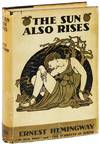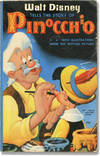

Stock Photo: Cover May Be Different
The British Army and the Theory of Armored Warfare, 1918-1940
by Larson, Robert H
- Used
- very good
- Hardcover
- first
- Condition
- Very good/Very good
- ISBN 10
- 0874132193
- ISBN 13
- 9780874132199
- Seller
-
Silver Spring, Maryland, United States
Payment Methods Accepted
About This Item
Cranbury, NJ: Associated University Presses, 1984. Presumed First Edition, First printing. Hardcover. Very good/Very good. 265, [7] pages. Includes Notes. Charts, Acknowledgments, Bibliography and Index. Chapters are: Years of Defeat: The Search for Responsibility; The Tradition: The Strategy of Attrition; The Challenge: The Theory of Armored Warfare; The Postwar Period: 1918-1927; The Years of Experiment: 1927-34; The Period of Early Rearmament: 1934-37; Prelude to War: 1937-40; and Epilogue: The Test of Battle. Robert H. Larson received his Ph.D. in History from the University of Virginia. He has been with the Lycoming College Since 1969 and is now a Professor emeritus. This work includes substantial discussion of the works and influence of J. F. C. Fuller and B. H. Liddell Hart as well as a substantive discussion of the Royal Tank Corps. The British Army invented the tank and pioneered its development during World War I, and produced the leading theorists of armored warfare, J.F.C. Fuller and B.H. Liddell Hart, during the interwar years. Yet, the British were caught totally off-guard by the German blitzkriegs into Poland in 1939 and into France in 1940, and it took the British years to regain their superiority in armored warfare. This book insightfully and authoritatively chronicles the development of the tank and the theory of armored warfare during this crucial era. The greatest contribution of Professor Larson's study is the refutation of the persistent and erroneous myths given to explain the failure of Great Britain's armored forces at the beginning of the Second World War. In the past, this failure has been attributed to the dominance of the officer corps by the "landed classes," who had "entered the army seeking a leisurely outdoor style of life compatible with their upbringing." Because of their upbringing, this stereotype continues, these officers favored the cavalry, and staunchly opposed every effort aimed at a diminution in the use and influence of the cavalry. These provincial traditionalists purportedly also sought to protect their revered regiments, many of which would have had to be abolished by the threatened expansion of the Royal Armored Corps. The author adroitly presents statistical proof that this "social interpretation" is "very largely nonsense," since in 1930 the aristocracy and landed gentry constituted only eleven percent of the entire officer corps and forty percent of those holding the rank of major-general or above (p. 17). In addition, by an analysis of the promotion patterns of officers of the three combat arms (Infantry, cavalry, artillery) into the general officer ranks during the interwar period, the author shows that the cavalry was being steadily relegated to "a position of insignificance, if not total exclusion." The author also ably dissects the argument that British government policy and draconian economic measures were the cause of the initial British armor setbacks in World War II, and concludes these pretexts have "severe limitations." This argument does not explain, after the government realized it must prepare for a Continental commitment, why the ratio of armor to Infantry decreased-when it should have logically been increased. Nor does British policy explain the inability of its armored forces to successfully deploy against the Germans until the third year of the war. From these analyses, the author keenly deduces that the British armored forces were improperly trained for the type of combat which confronted them in World War II, primarily because "the British Army refused to change its basic strategic doctrines to maximize the potential of a new weapon of war." The remainder of the book supports this thesis. Derived from a review found on-line by Professor Harold Raugh, Jr. of UCLA from the UCLA Historical Journal, Volume 8.
Reviews
(Log in or Create an Account first!)
Details
- Bookseller
- Ground Zero Books
(US)
- Bookseller's Inventory #
- 83513
- Title
- The British Army and the Theory of Armored Warfare, 1918-1940
- Author
- Larson, Robert H
- Format/Binding
- Hardcover
- Book Condition
- Used - Very good
- Jacket Condition
- Very good
- Quantity Available
- 1
- Edition
- Presumed First Edition, First printing
- ISBN 10
- 0874132193
- ISBN 13
- 9780874132199
- Publisher
- Associated University Presses
- Place of Publication
- Cranbury, NJ
- Date Published
- 1984
- Keywords
- Armored Warfare, Royal Tank Corps, J. F. C. Fuller, Liddell Hart, Experimental Mechanized Force, Military Strategy, Military Technology, British Army, Cambrai, Montgomery-Massingberd, Ernest Swinton, George Milne, Experimental Armoured Force, Cavalry
Terms of Sale
Ground Zero Books
Books are offered subject to prior sale. Satisfaction guaranteed. If you notify us within 7 days that you are not satisfied with your purchase, we will refund your purchase price when you return the item in the condition in which it was sold.
About the Seller
Ground Zero Books
Biblio member since 2005
Silver Spring, Maryland
About Ground Zero Books
Founded and operated by trained historians, Ground Zero Books, Ltd., has for over 30 years served scholars, collectors, universities, and all who are interested in military and political history.
Much of our diverse stock is not yet listed on line. If you can't locate the book or other item that you want, please contact us. We may well have it in stock. We welcome your want lists, and encourage you to send them to us.
Much of our diverse stock is not yet listed on line. If you can't locate the book or other item that you want, please contact us. We may well have it in stock. We welcome your want lists, and encourage you to send them to us.
Glossary
Some terminology that may be used in this description includes:
- Remainder
- Book(s) which are sold at a very deep discount to alleviate publisher overstock. Often, though not always, they have a remainder...
- First Edition
- In book collecting, the first edition is the earliest published form of a book. A book may have more than one first edition in...
- New
- A new book is a book previously not circulated to a buyer. Although a new book is typically free of any faults or defects, "new"...

